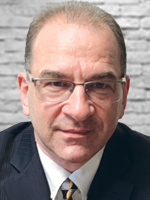The Medical Records Are the Insurance Company’s Primary Source of Data Which They Use to Determine Settlement Valuation. One of the Single Most Important Considerations That Determine Settlement Valuation is derived from “Value Drivers” and "Decision Points" that Insurance Companies Use to Determine the range of worth of an injury claim. There Are 26 Value Driver sections, and 67,880 decision points. The insurance companies refuse to release their decision points to the public making it difficult to navigate the claim. The audit however, contains a search engine to detect overlooked value drivers and decision points and exchange them in the correct language, format and sequence to interface and input added valuation into the injury claim, and reverse claims that have been undervalued.
We engage a proprietary softwarein our audit process to make the same medical determinations as the insurer's software's. Using ambient intelligence technology, our software features a rare Computer Aided Decision-making functionality (CAD) and Decision Support System (DSS). This ability is no match for the human mind and this technology advancement is a key component of our ability to reverse undervaluation's on injury claims.
As an auditor and 'Knowledgeable Observer', we apply MECE standards to our audits. MECE = Mutually Exclusive / Collectively Exhaustive. This essentially means that we are mutually exclusive as an injury claim auditor and exhaust all methods to audit 26 sections and 60 factors on each claim in order to reverse undervaluations of injury claims.
Bacon ipsum dolor sit amet landjaeger sausage brisket, jerky drumstick fatback boudin ball tip turducken. Pork belly meatball t-bone bresaola tail filet mignon kevin turkey ribeye shank flank doner cow kielbasa shankle. Pig swine chicken hamburger, tenderloin turkey rump ball tip sirloin frankfurter meatloaf boudin brisket ham hock. Hamburger venison brisket tri-tip andouille pork belly ball tip short ribs biltong meatball chuck. Pork chop ribeye tail short ribs, beef hamburger meatball kielbasa rump corned beef porchetta landjaeger flank. Doner rump frankfurter meatball meatloaf, cow kevin pork pork loin venison fatback spare ribs salami beef ribs.
Jerky jowl pork chop tongue, kielbasa shank venison. Capicola shank pig ribeye leberkas filet mignon brisket beef kevin tenderloin porchetta. Capicola fatback venison shank kielbasa, drumstick ribeye landjaeger beef kevin tail meatball pastrami prosciutto pancetta. Tail kevin spare ribs ground round ham ham hock brisket shoulder. Corned beef tri-tip leberkas flank sausage ham hock filet mignon beef ribs pancetta turkey.







